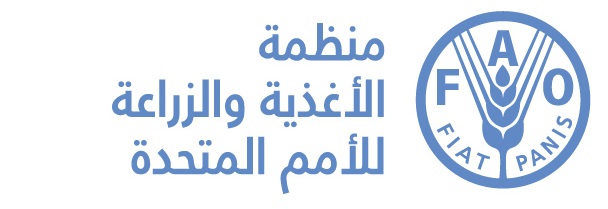IPPC Celebrates its 60th Anniversary
Posted on خميس, 28 فبراير 2013, 14:27
The International Plant Protection Convention at 60 years: increasingly essential as pest risk increases due to globalization. 60 Years in various languages Rome, 6th of December of 2011. The International Plant Protection Convention (IPPC) will celebrate its 60th anniversary in 2012. This multilateral international agreement was signed on 6 December 1951 and entered into force on 3 April 1952. During the past six decades, the IPPC has become the core international agreement that aims to protect cultivated and wild plants by preventing the introduction and spread of pests.[^1] The anniversary will serve to emphasize the importance of controlling pests through international cooperation and national action. Globalization, international travel and trade are at greater pace than ever before. As people and commodities move around the world, organisms that present risks to plants can often travel with them. Despite annual global sales of pesticides for the control of pests reaching $45bn, plant pests remain a major constraint to crop production worldwide resulting in production losses of approximately 20-40%. Preventing the introduction of new environmentally and economically important pests into a country is far more cost effective than trying to eradicate or manage the pest after introduction. IPPC Logo Web Glyph At present, the 177 members (countries) of the IPPC cooperate to protect global plant resources from the spread and introduction of pests of plants, to protect food security, plant resources and to facilitate safe trade. The IPPC s current work programme focuses on two primary topics. The first is the development and utilization of International Standards for Phytosanitary Measures (ISPMs) to ensure the adequate protection of national plant resources and hence food security. The second is to exchange official IPPC information to improve transparency and promote the safe trade of plants and plant products. National phytosanitary capacity building is absolutely essential at all levels to ensure that the IPPC and ISPMs are implemented. The IPPC Secretariat, based in FAO in Rome, ensures that this work programme continues and promotes their work to a wide range of stakeholders such as industry, educators, researchers, farmers, horticulturists, agronomists and civil society. ## The Anniversary The celebration of the 60th IPPC anniversary will take place from 19-23 March 2012, during the annual meeting of the Commission on Phytosanitary Measures (CPM) in Rome. The IPPC Secreatariat will take it as an opportunity to launch the new IPPC Strategic Framework. There will also be an IPPC Scientific Symposium on the afternoon of Thursday 22 March looking at current and future challenges, while acknowledging past achievements and learning from previous efforts. Details will become available through the IPPC website. ## Pests, a Global Threat Plants pest outbreaks are a serious threat to the food security of countries, particularly when they move across national boundaries and cause an unexpected crop or plant resource failure. Crop pests can be the result of environmental factors beyond farmers control (wind, unseasonable temperature, rainfall patterns with rust diseases or locusts). But the introduction of pests is also often related to patterns of trade, the exchange of research material, food aid or civil unrest. Teia Anartoides - Painted apple moth Painted apple moth - Ken Walker, Museum Victoria.
Plant pests become more important when they overwhelm countries that are unprepared or have limited capacity to deal with them. In such cases, the consequences of pest infestations can be devastating with regard to food security, livelihoods and market access. Often the response to such pest outbreaks is the use of highly toxic pesticides in infested areas at an often high financial cost, posing another significant risk to the environment and human health. Prevention is better than cure in terms of food security and financial cost. ## About The International Plant Protection Convention * The concept of international plant protection began in 1881, when five countries signed an agreement to control the spread of Phylloxera, a North American aphid that was accidentally introduced into Europe around 1865 and subsequently devastated much of Europe s grape-growing regions. * The International Convention for the Protection of Plants was signed in Rome in 1929. In 1951, it was updated and adopted by the Food and Agriculture Organization of the United Nations and in April of the following year, the IPPC came into force. * In 1995, the World Trade Organization (WTO) was established. Subsequently, the IPPC was officially recognized as the plant health standard setting organization in the WTO Agreement on the Application of Sanitary and Phytosanitary Measures (SPS Agreement). * In 1992 the IPPC Secretariat was established at FAO headquarters in Rome and began its international standard-setting programme. Three years later, the FAO Conference approved the first three international standards for phytosanitary measures (ISPMs) to help protect the world s plants and plant industries by controlling the spread of plant pests. * In 1997, the 29th FAO Conference unanimously adopted the New Revised Text of the IPPC, which came into force in October 2005, following acceptance of the revisions by a sufficient number of contracting parties. * Under the SPS Agreement, the IPPC provides international standards on which governments base their national phytosanitary measures in order to protect their plant resources from harmful pests, while ensuring that these measures are scientifically justified and are not used as unjustified barriers to international trade. ## For more information Website: www.ippc.int Email: [email protected] Telephone: +39 06 5705 4812 Fax: +39 06 5705 4819 Adress: IPPC Secretariat, FAO-AGPP Viale delle Terme di Caracalla - 00153 - Rome, Italy. * * [^1]: Any species, strain or biotype of plant, animal or pathogenic agent injurious to plants or plant products* [FAO, 1990; revised FAO, 1995; IPPC, 1997]

